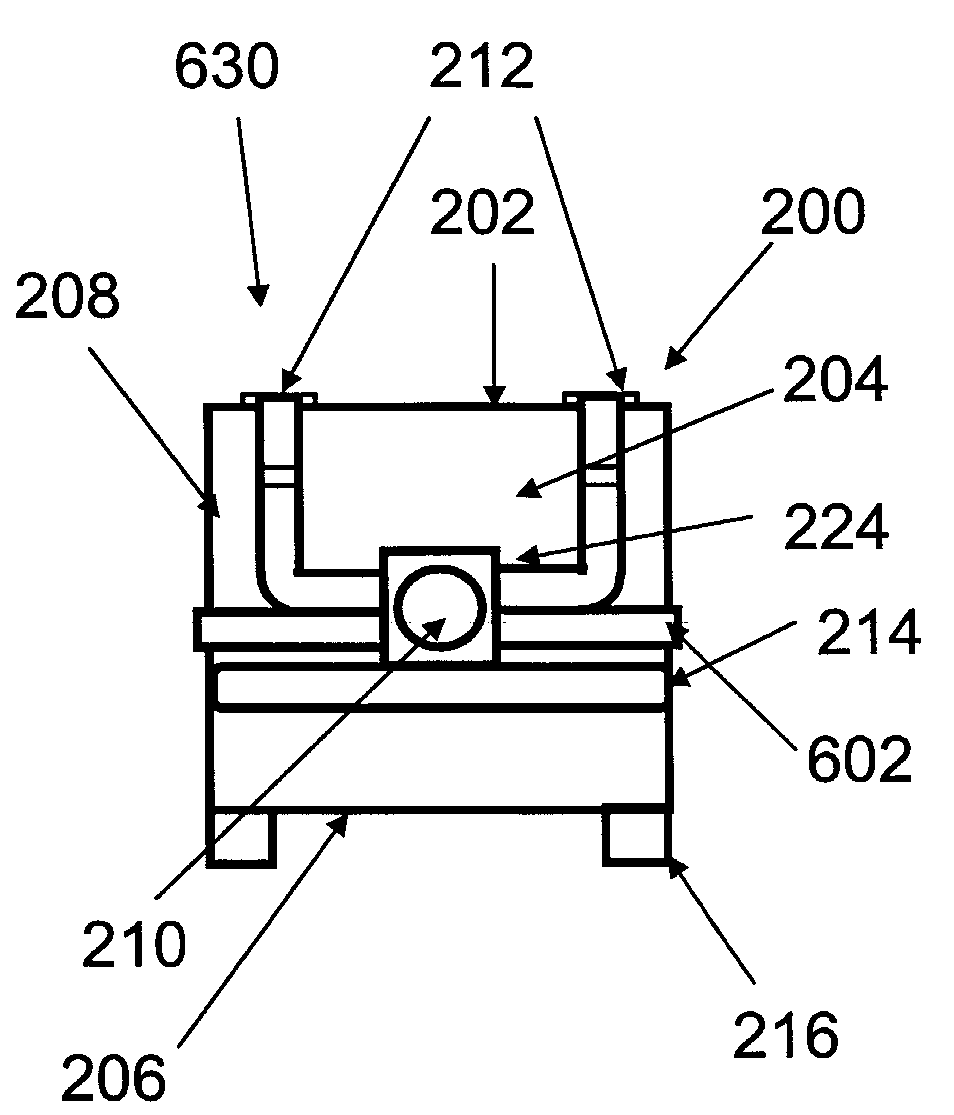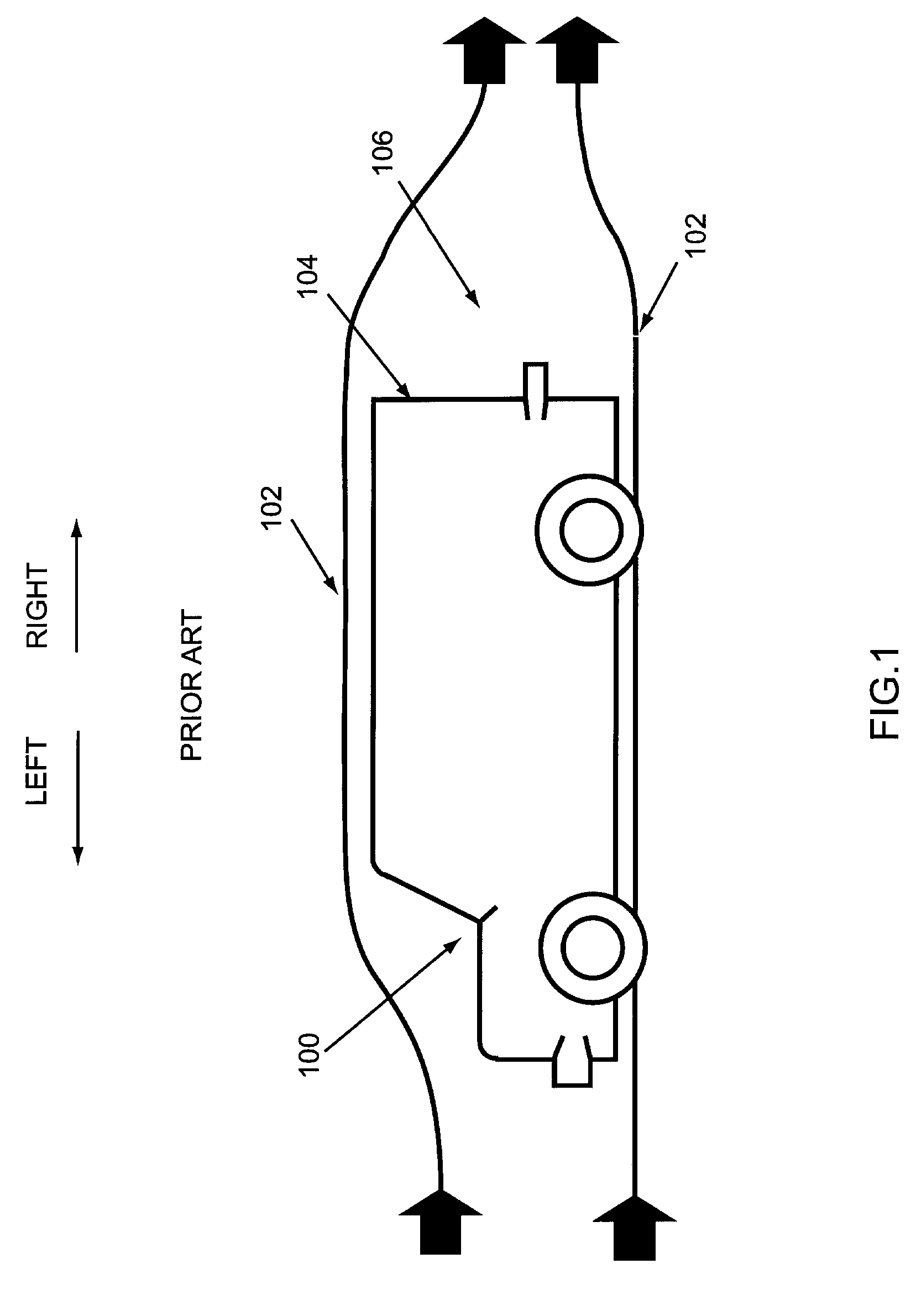Pressure Drag Reduction System with a Side Duct
a pressure drag reduction and side duct technology, applied in the field of vehicles, can solve the problems of high fuel consumption, high operating cost of modern motor vehicles, and high cost of fuel, so as to improve the fuel efficiency of vehicles, reduce the pressure drag, and reduce the pressure drag
- Summary
- Abstract
- Description
- Claims
- Application Information
AI Technical Summary
Benefits of technology
Problems solved by technology
Method used
Image
Examples
Embodiment Construction
[0029] The following is a detailed description of example embodiments of the invention depicted in the accompanying drawings. The example embodiments are in such detail as to clearly communicate the invention. However, the amount of detail offered is not intended to limit the anticipated variations of embodiments; but, on the contrary, the intention is to cover all modifications, equivalents, and alternatives falling within the spirit and scope of the present invention as defined by the appended claims. The detailed descriptions below are designed to make such embodiments obvious to a person of ordinary skill in the art.
[0030] Generally speaking, a method and apparatus for reducing the aerodynamic drag of a vehicle is disclosed. More particularly, a method and apparatus is disclosed for increasing the pressure of air behind the vehicle so as to reduce pressure drag. One embodiment provides one or more fans attached to a vehicle, wherein at least one fan is positioned to direct air ...
PUM
 Login to View More
Login to View More Abstract
Description
Claims
Application Information
 Login to View More
Login to View More - R&D
- Intellectual Property
- Life Sciences
- Materials
- Tech Scout
- Unparalleled Data Quality
- Higher Quality Content
- 60% Fewer Hallucinations
Browse by: Latest US Patents, China's latest patents, Technical Efficacy Thesaurus, Application Domain, Technology Topic, Popular Technical Reports.
© 2025 PatSnap. All rights reserved.Legal|Privacy policy|Modern Slavery Act Transparency Statement|Sitemap|About US| Contact US: help@patsnap.com



